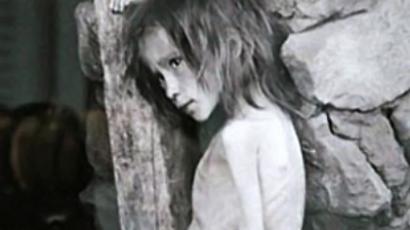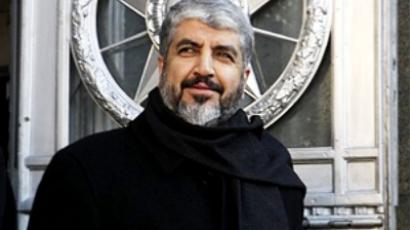The census is a 3D portrait of the people

Population expert, Vladimir Zorin, tells RT what to expect from the current Russian census, comments on whether Russians are dying out, and explains why the question about religion has been taken off the forms.
The all-Russian population census began on Thursday. The previous census was conducted in 2002. It is expected to show how and whether Russia outlasted the world economic crisis. It is also hoped to reveal the extent to which the birth rate is overtaking the death rate, addressing the population decline that has been the main scourge of post-Soviet times. The current census will cost Russia about 17 bln rubles (US$566 mln.)RT: Why does Russia need a census? We are living in a world where every person is registered: we have numbered passports, tax ID numbers, insurance numbers, city registration…Vladimir Zorin- Deputy Director of Ethnology and Anthropology Institute, doctor of political sciences- worked as Russian Minister of National Policy (2001-2004)- worked as Deputy Presidential Envoy in the Volga federal district (2000-2001, 2005-2009)- worked as a State Duma deputy and head of its committee on national affairs (1996-2000)- educated in Tashkent. Worked in Uzbekistan and at the Uzbek Embassy in Moscow (1991-1993)Vladimir Zorin:I cannot agree with you in that registration mechanisms have been honed to perfection and every person is registered. A census is the most large-scale sociology study there is. No registration mechanism, not even the kind you would see in the most developed countries, is as accurate as a census. This is why a census is our only source for certain kinds of information. In a way, a census allows us to take an instant photo of the people. I would even say it’s like a 3D portrait of the people because we can compare the figures we got during the last census with the current one. We can see current trends such as how well we endured the economic crisis and how we are pulling out of it. What happened within the past ten years. I would like to note that the commonly accepted margin between censuses is ten years. It is a regulation that has been approved by the UN. I am pleased to note that Russia is getting into this census rhythm.RT: What new columns does the 2010 census sheet have that the 2002 census sheet didn’t? VZ: There is nothing that I would call completely new. The 2010 census is being carried out in the same way as the 2002 census. These methods are based on worldwide practice and UN recommendations. The only difference is that this time we are collecting information about the quality and condition of respondents’ residences. This information will be used to develop housing improvement programs for the people of Russia.RT: Why has the question on religion been taken off the sheet?VZ: This is a question that has been widely discussed lately. I do not have a clear answer but I do have several versions that I’m prepared to share. Firstly, Russia has gone through 70 years of state-enforced atheism which may have reflected on people’s attitudes towards questions about their faith. In addition, there are certain methodical issues: how do we ask the question? Who do we consider a believer? Should we ask people how they feel about various religions? This question, like the nationality question, is very delicate. There is another factor: conducting a census is expensive. Every question originates from a certain entity: a ministry, a state agency or a regional administrative body. As far as I know, Russian religious organizations did not raise the question of asking about religion on the census sheet. RT: There are always some people who slam the results of censuses. How accurate is the Russian census?VZ: The results of any census, indeed, any kind of statistics, are always discussed by the public. People doubt them. I know that our census is organized in such a way that allows us to control the census takers’ work. We can control all stages of the information gathering process. The process of obtaining final data is under control. It’s a complex controlling system. Just to remind you, there were people who were unhappy with the census data obtained in Chechnya in 2002. Criticism was about the fact that the republic had undergone two wars while the census showed an increase in the population. This approach to demography is futile: there is a response of the populace to danger, it instinctively strives to preserve itself, and losses are compensated through increased birth rate.RT: How true is the subject of “Russians dying out” which is being discussed in the media?IS RUSSIA DYING OUT?- 1719: Population: 13.4mln- 1858: Population: 74mln- 1940: Population of Russian Federation (then part of the USSR): 110mln- 1950s: Population of Russian Federation: 101mln (USSR ‘s overall losses in WW2 – around 26mln)- 1989: Population of Russian Federation: 147mln- 2002: Population of Russia: 145mlnVZ: There is a favorite subject about Russia being discussed recently – about us “fast dying out”. Is it perhaps because someone really wants it to become a reality? It is an attempt to attach some traits of realism to the myth through certain figures without noting certain others. Our demography reflects common European processes. It’s known that the more urbanisation, the lower the birth rate. During the whole of the 20th century the urban population in Russia grew dramatically. Our level of urbanization has been stabilized. It will be intriguing to have a look at this data obtained in the past eight years. I don’t rule out the urban population percentage is expected slightly smaller than in 2002.The Russian Empire in 1719 had 13.4 million people. In 1858 it had 74 million, while in 1940 the Russian Federation within the Soviet Union had 109 million people. It’s obvious the biggest demographic disaster in Russia fell during the years of World War II. Right after the war no census was held but officially calculated number of people residing in the Russian Federation was 101 million. In 2002 we had slightly more than 145 million. The assessments depend on what they are compared with.The web page of the Russian Statistics Agency, about the census, gives the estimated number to be slightly less than 142 million. It’s worth noting that in 2009 for the first time after a long period, we did not see decreasing of the population. It even grew by several tens of thousands of people. This trend remained this year. However, we have two causes: increased birth rate and decreased mortality, as well as increased immigration as compared with emigration. I think the census will specify the figures. Our institute presented an expert evaluation that the figures will be a little more at the cost of better organization of the census, including migrants. As is known, it’s census of the population at large, but not of citizens. We count all the permanent residents of our country. So, I think there will always be biased experts and political forces who would like to manipulate the figures, but the census follows UN methods and is recognized all over the world as the only, valid, document about the population in the country.RT: Some experts reproach us even for having many almost unpopulated areas, with very few people living on a square kilometer. Isn’t it a resource for the future?VZ:We have many advantages and not only huge spaces. We do not just have many resources – not only oil, gas, gold and other mineral resources – but also many cultures and faiths. It’s a source for innovation development, not for a headache, as some specialists in conflict resolution believe..RT: Does the absence of data on religious beliefs help such speculation spread? The CIA Factbook states, for instance, that 15-20 % of Russia’s population are Orthodox Christians, and 10-15 % are Muslims.VZ: There are several methods to calculate people in terms of faith. One of them relies on an ethnicHow can faith adherence be measured in Russia?- No question in the census questionnaire, the subject to be researched only by sociologists- Ethnically, 70-80 % of the population are Orthodox Christians, and 10 % are Muslims- 49 % – 65 % are religious – current estimate by sociologists- 56 % are religious – Stalin-era 1937 censusapproach when all the ethnic groups traditionally believed to belong to this or that faith are calculated. If we proceed from this method, in 2002, 14.5 million Muslims, i.e. 10 % of the population, lived in Russia. Orthodox Christians number 70 to 80 %, according to quite a number of indicators. The Sociology Institute did a survey two years ago which showed 49 % of respondents to be religiously minded and 48 % non-religious. Eighty-seven [per cent] of them are Orthodox Christians, and 11 % are Muslims. The data obtained by European researchers vary between 40-70 % in various regions of our country.Experts state piety grew very fast in the 1990s until in the 2000s the processes stabilized. In Siberia and Russia’s Far East, the religious landscape continues to change depending of migration and religious missionary work.RT: Why then, is it the ethnic factor is taken into account, while the religious one is not? The ethnic factor divides whereas faith unites, isn’t that so?VZ: Before the middle of the 19th Century, some censuses considered the social estate approach. Nationalities were not considered then. The first all-Russia census – during which the Emperor, when answering the question about “occupation” said “master of the Russian land” – considered faith but not ethnic belonging. Then, in 1897, the whole population of the Russian Empire was 125,600,000. Orthodox Christians numbered 72 %; 11.1 % were Muslims, 9.2 % were Roman Catholic, 3 % were Protestants, 0.4 % Buddhists, and 4.2 % Jews. In later years, given state-sponsored atheism, there were no questions about faith, until in 1937, when it was reintroduced following Joseph Stalin’s personal instruction. Fifty-six per cent identified themselves as religious, with the background of Soviet power asserting that atheism had won. After that this question was never asked in either census. We have a multi-national state, so this question [about ethnic belonging] was asked in all the censuses. In some countries the question about ethnicity is not normally asked. In the USA it is asked, for instance.As of today, there is no mention about nationality in our passports or in any other identity document, which means that a census is the only way to find out the ethnicity composition of the population. According to the 2002 census, we calculated 182 peoples, 150 functioning languages – the figure rising to 247 if dialects are added. This is what concerns the picture about our multinational country.Nadezhda Kevorkova, RT














